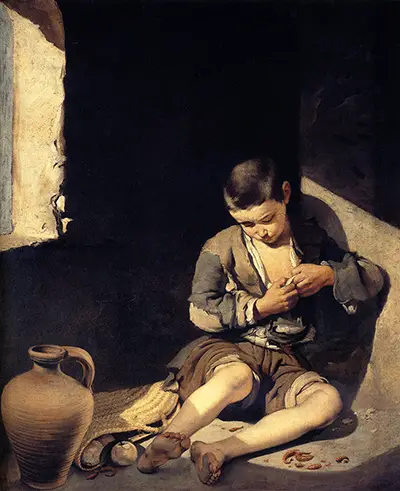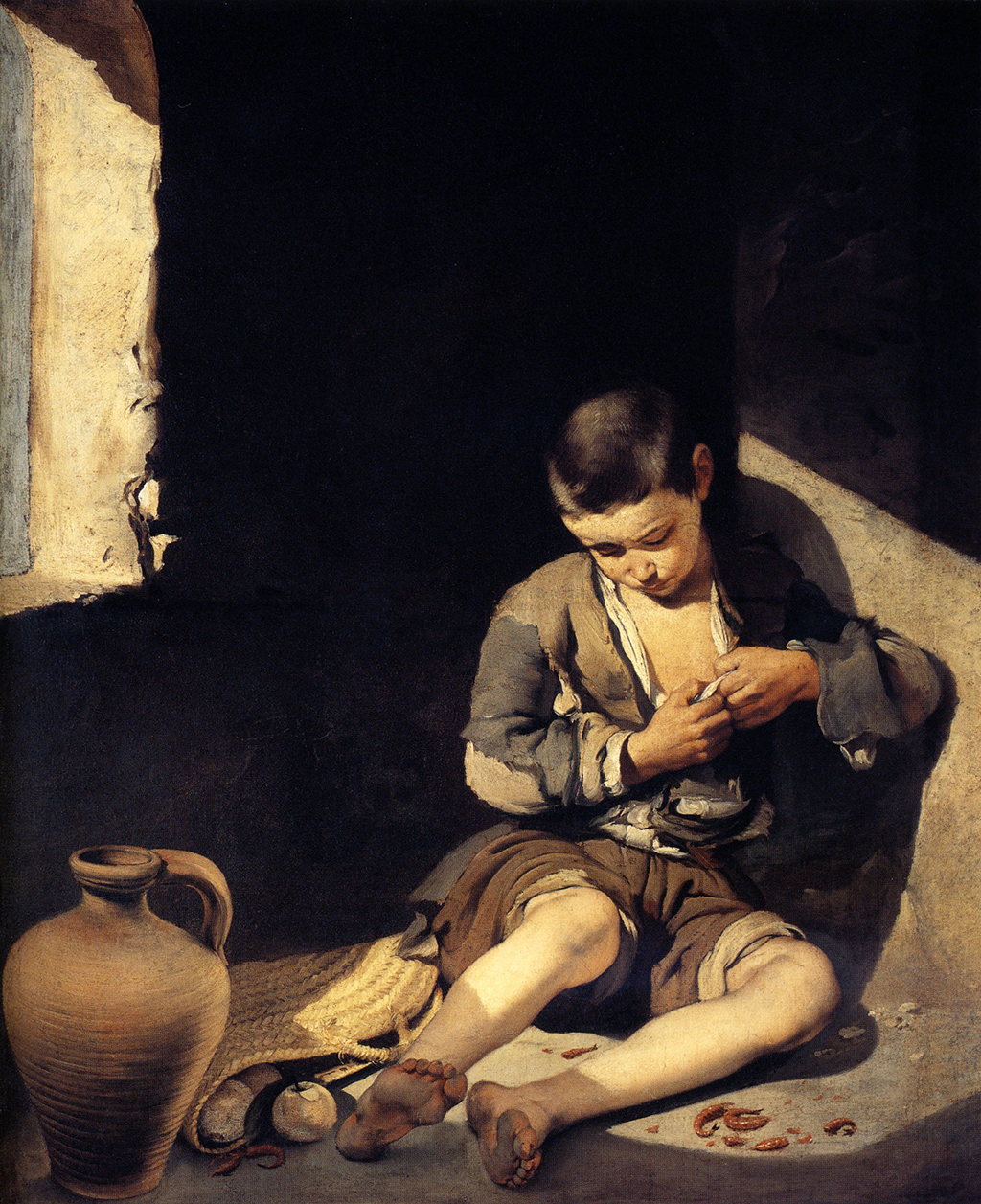The Young Beggar by Bartolomé Esteban Murillo can be considered the artist's most famous genre painting. This type of content would focus on the lives of ordinary people in everyday situations and seemed to appeal to some specific types of patrons during the 17th century.
This dramatically lit piece can now be found in the Louvre Museum in Paris, France and this offers it considerable exposure to the public. It is a particularly large artwork, measuring around three metres in height and 134cm in width. Murillo, its creator, was a highly innovative painter who brought about many artistic developments within Spain across his career, some of which would then be taken on board by some of his followers and continued into the future. In The Young Beggar we find a boy in simple clothing sat in the corner of a room, attempting to shelter from the bright sunshine. This allows the artist to try out particularly abrupt lighting, with the room itself pretty dark in places. The boy himself has very short hair and his clothes are damaged, with an open shirt that he fiddles with. His expression is one of discomfort and sadness as he looks down towards the floor.
An open window is shown to the left, through which bright light saturated much of the scene. We can still see other items, however, including a large clay jug to the left hand side, as well as perhaps a straw bag which lies besides the young beggar. Murillo himself was a kind, sensitive individual and this personality shows in some of his more sensitive paintings. He was able to connect with the public with his religious work in a way that no-one else had achieved in Spain up to that point, and his Genre paintings such as this was just really an extension of that understanding and connection with the common man. Tastes for art would vary between his different patrons, and Murillo quickly worked out which style and content to serve to which people. It was specifically in Flanders that this approach was most popular and so he looked to export most of his work in this style, using the strong trading relationships found in his native Seville.
Seville itself would undergo a turbulent period in its history during which a large proportion of its population wuould die to disease. This greatily damaged the progress of this region but also made the lives of the poor a particular issue for most residents. Therefore, artists would become even more aware of this part of the local community and so it became more necessary to focus on their lives within paintings, although Murillo himself had already done so for many years prior to that. Northern Europe had already connected with its poor through art and to see the Spanish take on this interested many of the artist's patrons. Murillo became regarded as the most popular artist in Spain at that time, though his reputation would rise and fall at different points after his death.





